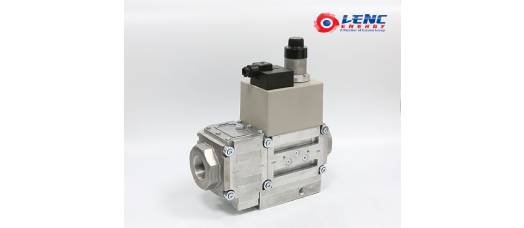The Working Principle of Solenoid Valve And Common Faults
Solenoid Valve is an industrial equipment controlled by electromagnetic. It is an automatic basic component used to control fluid. It belongs to actuator; it is not limited to hydraulic and pneumatic. It is widely used in our daily life. First of all, we have a preliminary understanding of solenoid valves. Solenoid valves are composed of solenoid coils and magnetic cores, and are valve bodies containing one or more holes. When the coil is energized or de-energized, the operation of the magnetic core will cause the fluid to pass through the valve body or be cut off to achieve the purpose of changing the direction of the fluid.
The working principle of the solenoid valve: There is a closed cavity in the solenoid valve with through holes at different positions. Each hole leads to a different tubing. In the middle of the cavity is a valve. On both sides are two electromagnets. Which side of the magnet coil is energized. The body will be attracted to which side, by controlling the movement of the valve body to block or leak out the different drain holes, and the oil inlet hole is normally open, the hydraulic oil will enter the different drain pipes, and then through the oil The pressure pushes the piston of the oil cylinder, the piston drives the piston rod, and the piston rod drives the mechanical device to move. In this way, the mechanical movement is controlled by controlling the current of the electromagnet.
The fault of the solenoid valve will directly affect the action of the switching valve and the regulating valve. The common fault is mainly that the solenoid valve does not operate, which should be investigated from the following four aspects:

Solenoid Valve
(1) Air leakage: Air leakage will cause insufficient air pressure, making it difficult to open and close the forced valve. The reason is that the sealing gasket is damaged or the slide valve is worn, which causes blow-by in several cavities. When dealing with the fault of the solenoid valve of the switching system, the appropriate time should be selected and the solenoid valve should be dealt with when the solenoid valve is de-energized. If the processing cannot be completed within a switching gap, the switching system can be suspended and handled calmly.
(2) Solenoid valve stuck: The Gas Solenoid Valve has a small fit between the sliding valve sleeve and the valve core. Generally, it is a single-piece assembly. When mechanical impurities are brought in or there is too little lubricant, it is easy to get stuck. The treatment method can be made by inserting a steel wire through a small hole in the head to make it rebound. The fundamental solution is to remove the solenoid valve, take out the valve core and valve core sleeve, and clean it with CCI4 to make the valve core move flexibly in the valve sleeve. When disassembling, pay attention to the assembly sequence of the components and the position of the external wiring, so that the reassembly and wiring are correct, and check whether the oil spray hole of the lubricator is blocked and whether the lubricant is sufficient.
(3) The solenoid valve terminal is loose or the thread is off, the solenoid valve must not be energized, and the thread can be tightened.
(4) The solenoid valve coil is burnt out. You can remove the solenoid valve wire and measure with a multimeter. If it is open, the solenoid valve coil will burn out. The reason is that the coil is damp, causing poor insulation and magnetic leakage, causing excessive current in the coil and burning. Therefore, it is necessary to prevent rainwater from entering the solenoid valve. In addition, if the spring is too hard, the reaction force is too large, the number of turns of the coil is too few, and the suction force is not enough, the coil can be burnt.
If you have more questions, please contact the Solenoid Valves Manufacturers








